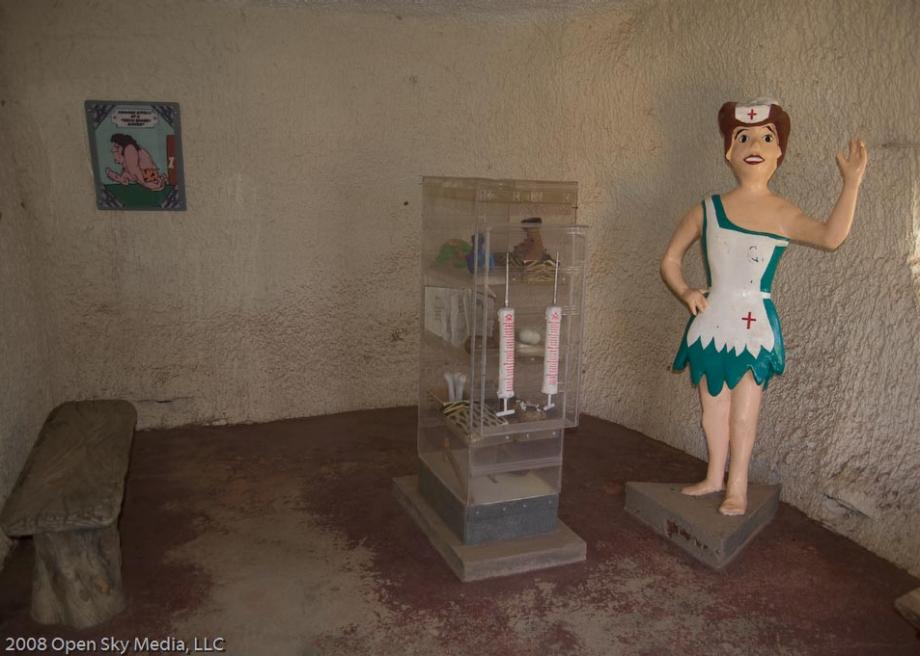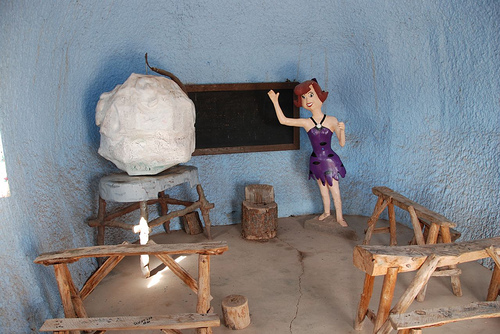The Grand Canyon. A place of epic visual scale where the modern world falls away, out of the human realm and into the deep geology of the earth. Layer upon layer of the planet’s crust revealed, the stuff that is under our very feet as we go about our day is laid bare here. 277 miles long, 18 miles wide and over a mile deep, cutting down through more than two billion years of geologic time, it is a place that can still drop the most jaded of jaws.
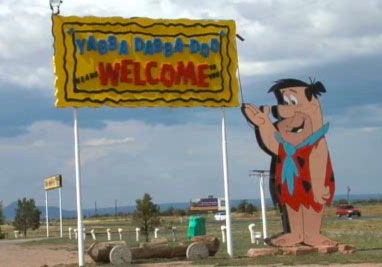
Outside the south entrance, the kind of development symbolized by a hulking, two-story Fred Flintstone cutout prevails over the barren landscape, calling out ”Yabba-dabba-doo” to motorists looking for a campground. This is Bedrock City of Arizona.
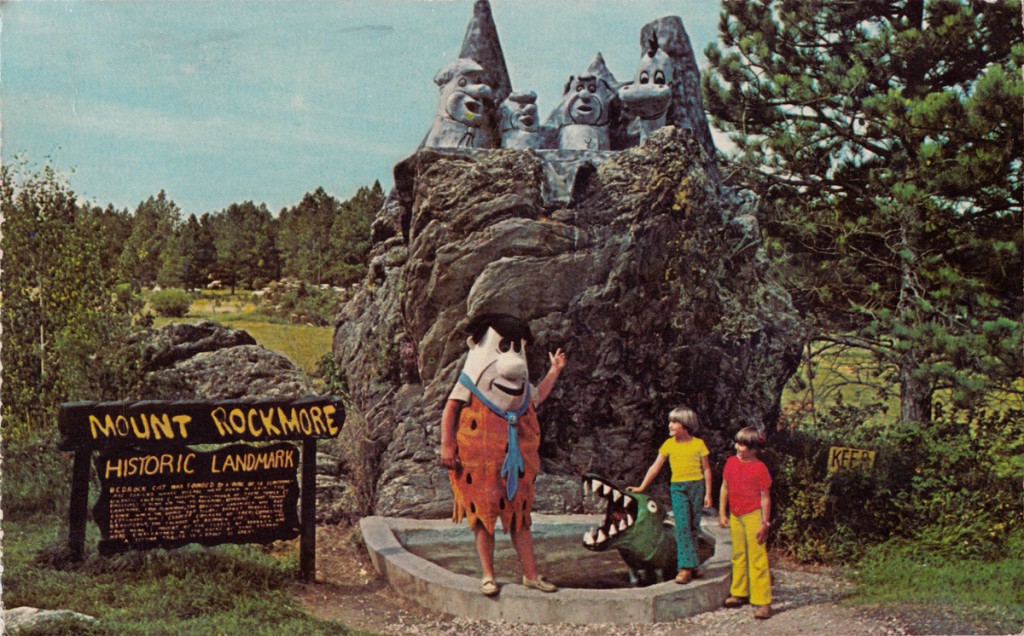 The Flintstones-themed amusement park, stands out on a flat, windswept, rocky plateau south of the Grand Canyon. It opened in 1972 – six years after the animated show ended its 166-episode run – during the height of the Route 66 roadside attraction craze. Apparently there was a time when Bedrock city was actually a popular stop for tourists on their way to the Grand Canyon, and guys in Fred and Barney bopped about. Today, it sits isolated in the middle of the Arizona desert, the scratchy Flintstones theme song soundtrack on continuous loop broadcast over the park’s tinny loudspeakers, echoing eerily between the dusty, dilapidating houses of Bedrock’s famous residents from a bygone era.
The Flintstones-themed amusement park, stands out on a flat, windswept, rocky plateau south of the Grand Canyon. It opened in 1972 – six years after the animated show ended its 166-episode run – during the height of the Route 66 roadside attraction craze. Apparently there was a time when Bedrock city was actually a popular stop for tourists on their way to the Grand Canyon, and guys in Fred and Barney bopped about. Today, it sits isolated in the middle of the Arizona desert, the scratchy Flintstones theme song soundtrack on continuous loop broadcast over the park’s tinny loudspeakers, echoing eerily between the dusty, dilapidating houses of Bedrock’s famous residents from a bygone era.
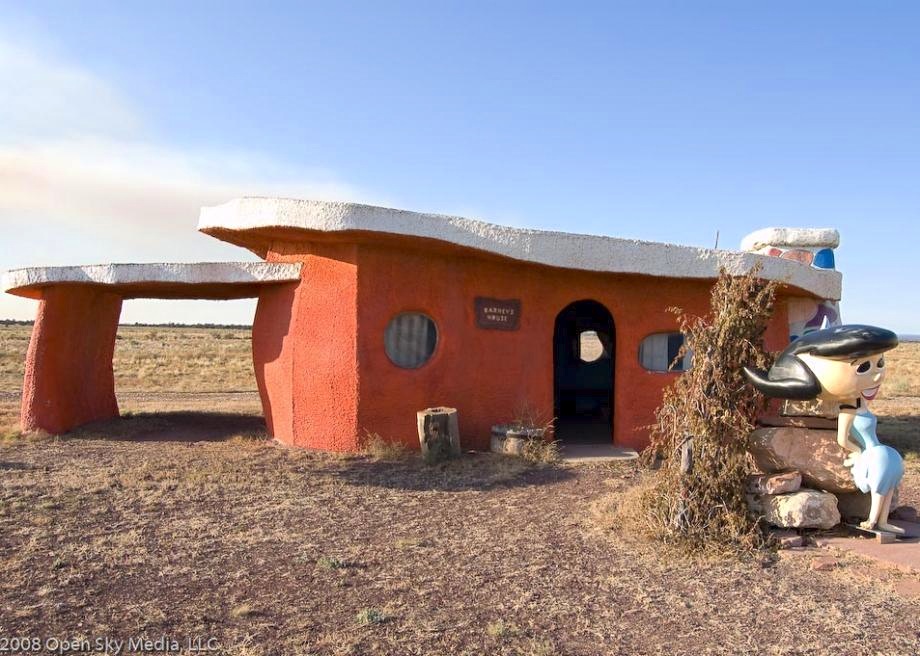
From a distance, Bedrock City appears abandoned. The sun-scorched concrete and the paucity of vegetation makes Bedrock City seem like an encampment of apocalypse survivors, or one of those ghost towns built by the military to test the effectiveness of atomic bombs. On the other hand, the sun-grizzled quality and the isolation give the place an authentic Stone Age feel. Alas, in the 43 years since its opening, this “theme park” has delighted successively fewer and fewer visitors.
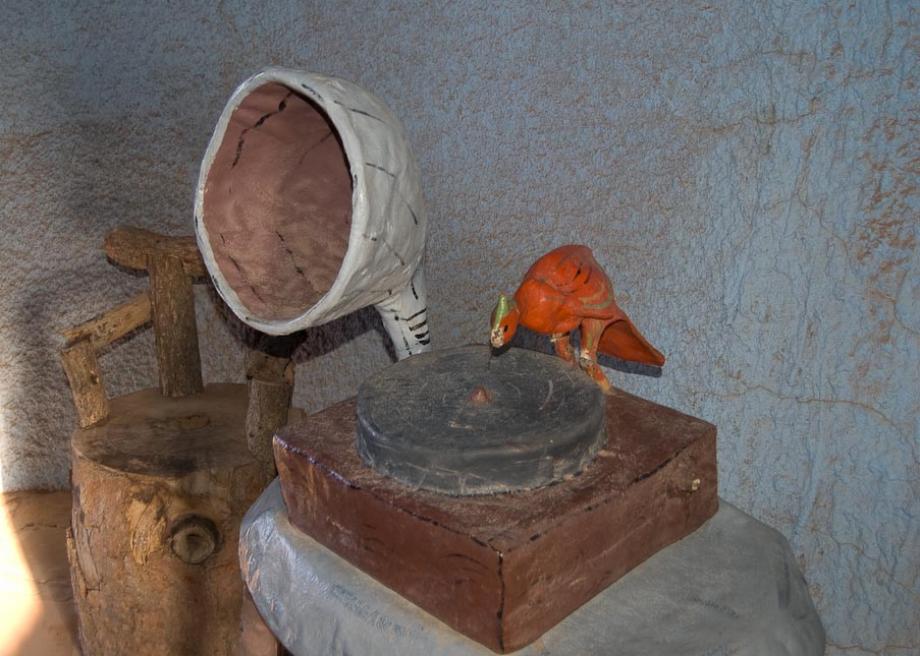
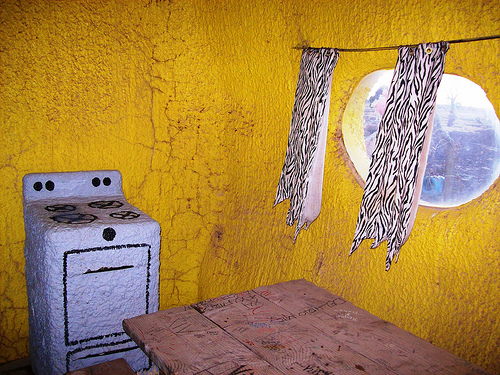
The scope and scale of the place is impressive: 30 acres, against the vast, empty backdrop and Arizona sky, full of decaying, sun-scorched stucco recreations of the homes of the Flintstone and Rubbles and hulking, pastel-colored dinosaur statues with peeling paint. All of the buildings — a general store, police station, school, post office, filling station, jail, hospital, beauty parlor, houses — are barren, painted in garish, now faded and peeling paint.
(if this place isn’t disturbing enough, there is another Bedrock City in Custer, South Dakota. That Bedrock City is apparently in better shape. It may be reassuring and freshly painted, but it’s still in South Dakota. Pose for photos next to giant bones, then get in your car, speed the hell away, and wonder if it was all a fever dream).
In George Saunders’ Civil War Land in Bad Decline, a motley assortment of down-and-outs work low-level jobs in bizarre theme parks that showcase such things as the American Civil War, an orgiastic recreation of medieval times, and, life among cave men. America is represented as a kind of dystopian Disneyland, where leisure and history combine in theme parks for the rich while the rest of humanity fights over scarce resources. If you are fundamentally concerned with the question of how we can truly know history and how can we divert history’s devious capacity to obscure the truth, look no further than Bedrock City. Bedrock City is the offspring of Saunders’ “degraded cosmos”, sadness and the carnivalesque, a ghost of its former self, neglected and surreal, hammering home the poverty of a simulated existence.
Bedrock City went on sale yesterday. Its sale brochure boasts it is the perfect place for casinos, resorts, time shares, or just a nice place to settle down when you want to escape the city grind. It also seems like the best place to start indoctrinating some spree killers since Manson took over an old Western movie set.
I guess there is a certain comfort to be taken in a place that so sharply illustrates the end of the rope. Where even our shrines to the past – even a fake, TV past – are battered, decrepit and all but abandoned. Truth is beauty, even at its ugliest.
